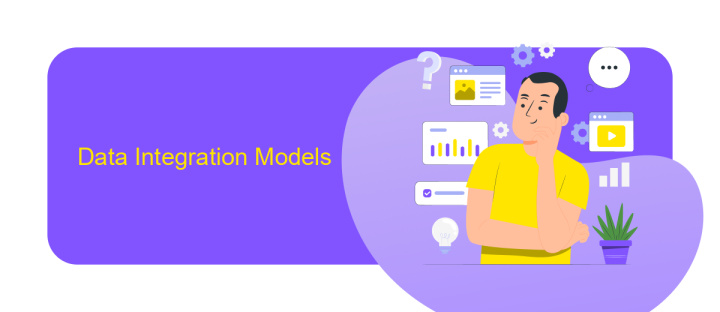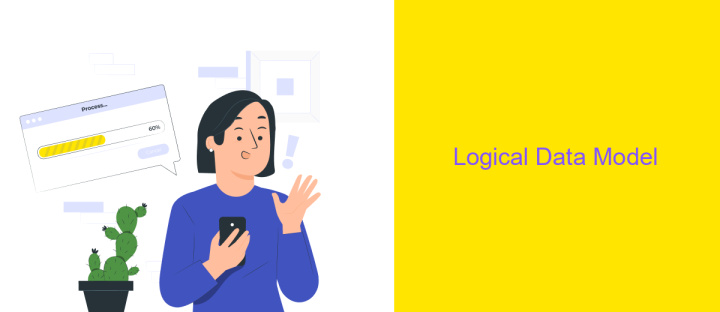Data Integration Models
Data integration models are essential frameworks in modern data management, enabling seamless merging of information from diverse sources into a unified view. These models facilitate efficient data analysis, improve decision-making processes, and support organizational goals by ensuring data consistency and accessibility. This article explores various data integration models, their applications, and the benefits they offer in today's data-driven world.
Introduction
Data integration is a critical process in modern data management, enabling organizations to consolidate information from diverse sources into a unified view. This process is essential for making informed business decisions, improving operational efficiency, and gaining competitive advantages. As data continues to proliferate in various formats and from numerous sources, effective data integration models become increasingly vital.
- Centralized Integration: Aggregates data in a single repository.
- Federated Integration: Data remains in its original source but is accessed as if it were centralized.
- Hybrid Integration: Combines elements of both centralized and federated models.
- Data Virtualization: Provides real-time data access without replication.
Each of these models offers unique advantages and challenges, depending on the specific needs and infrastructure of an organization. Understanding the different data integration models is crucial for selecting the right approach to manage and utilize data effectively. This article explores these models in detail, providing insights into their applications and best practices.
Data Integration Models

Data integration models are essential for combining data from various sources into a unified view, enabling organizations to gain comprehensive insights and make informed decisions. There are several models of data integration, including consolidation, federation, and propagation. Consolidation involves merging data from multiple sources into a central repository, such as a data warehouse. Federation, on the other hand, allows data to remain in its original source while providing a virtual view of the integrated data. Propagation involves copying data from one system to another, ensuring that changes in the source data are reflected in the target system.
Effective data integration often requires the use of specialized tools and services to streamline the process. ApiX-Drive is a powerful service that facilitates seamless data integration by automating the transfer of data between various applications and systems. With ApiX-Drive, organizations can set up integrations quickly without extensive coding knowledge, ensuring that data flows smoothly and consistently across platforms. This not only saves time but also reduces the risk of errors, making it an invaluable asset for businesses looking to enhance their data integration strategies.
Common Data Model

The Common Data Model (CDM) is a standardized framework that facilitates data interoperability across different systems and platforms. By providing a shared data language, CDM enables organizations to seamlessly integrate, analyze, and share data, thereby enhancing decision-making processes and operational efficiencies. This model is particularly valuable in environments where data comes from diverse sources and needs to be harmonized for comprehensive insights.
- Standardization: CDM provides a consistent schema that ensures uniformity in data representation across various applications.
- Interoperability: It allows different systems to communicate effectively, reducing data silos and promoting seamless data exchange.
- Scalability: CDM supports the integration of large volumes of data from multiple sources, making it adaptable to growing organizational needs.
- Flexibility: The model can be customized to fit specific business requirements, ensuring that unique data attributes are accurately captured.
Implementing a Common Data Model can significantly streamline data management processes, making it easier to maintain data quality and consistency. By adopting CDM, organizations can unlock the full potential of their data assets, driving innovation and achieving strategic objectives more efficiently.
Logical Data Model

The Logical Data Model (LDM) is a crucial step in the data integration process, providing a clear and structured representation of the data requirements and business rules. It serves as a bridge between the abstract conceptual model and the detailed physical model, ensuring that data is accurately represented and easily understood by both technical and non-technical stakeholders.
In an LDM, entities, attributes, and relationships are defined without considering how they will be physically implemented. This abstraction allows for a focus on business requirements and data consistency, rather than on technical constraints. The LDM is essential for identifying data redundancies and inconsistencies, which can be resolved before moving to the physical implementation.
- Entities: Represent key objects or concepts within the business domain.
- Attributes: Define the properties or characteristics of the entities.
- Relationships: Illustrate how entities are related to one another.
By developing a robust Logical Data Model, organizations can ensure data integrity and alignment with business objectives. This model acts as a foundation for creating a scalable and adaptable data architecture, facilitating effective data management and integration across various systems and applications.
- Automate the work of an online store or landing
- Empower through integration
- Don't spend money on programmers and integrators
- Save time by automating routine tasks
Physical Data Model
The Physical Data Model (PDM) represents the actual implementation of the data within a database. It is a detailed schema that outlines the specific storage structures, indexing strategies, and physical storage parameters. This model translates the logical data model into a format that can be implemented using a Database Management System (DBMS). The PDM includes tables, columns, data types, constraints, and relationships that are essential for accurate data storage and retrieval. It ensures that the data is stored efficiently and can be accessed quickly, optimizing performance for various applications.
In the context of data integration, the PDM plays a crucial role in harmonizing data from multiple sources into a unified format. Tools like ApiX-Drive facilitate this process by providing a platform to automate and manage data flows between different systems. ApiX-Drive allows users to set up integrations with minimal coding, ensuring that data is consistently and accurately mapped to the physical data model. By leveraging such services, organizations can streamline their data integration efforts, reduce errors, and enhance the overall reliability of their data infrastructure.
FAQ
What is data integration?
Why is data integration important for businesses?
What are the common challenges in data integration?
How can businesses automate data integration processes?
What are the different types of data integration models?
Apix-Drive is a universal tool that will quickly streamline any workflow, freeing you from routine and possible financial losses. Try ApiX-Drive in action and see how useful it is for you personally. In the meantime, when you are setting up connections between systems, think about where you are investing your free time, because now you will have much more of it.


